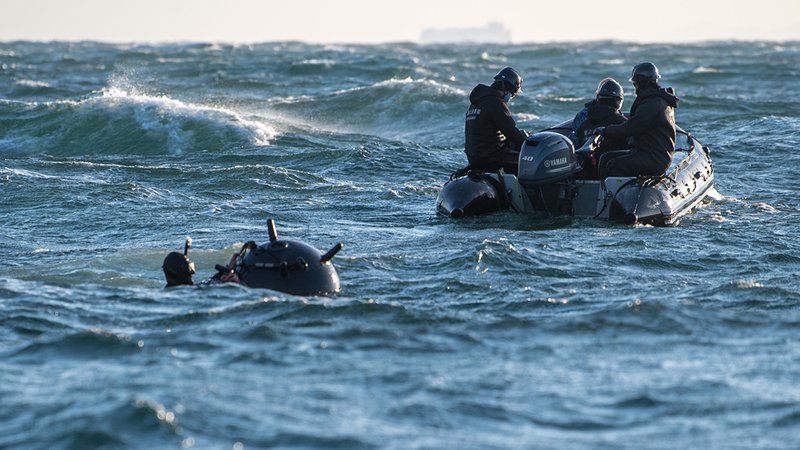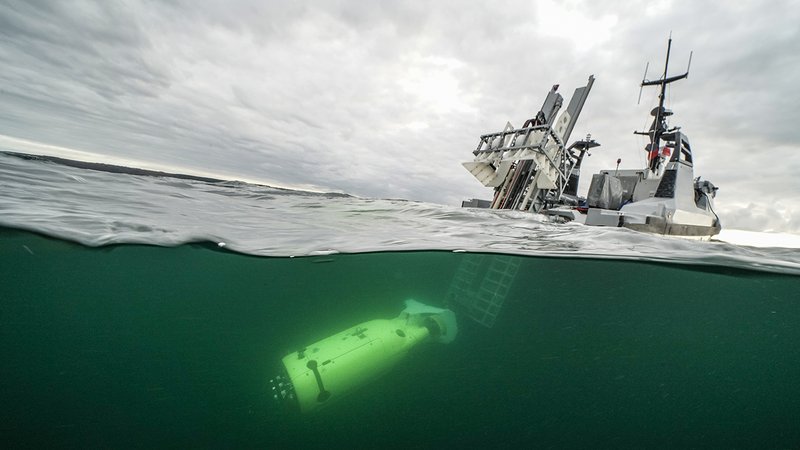Sea mines and supply lines – why an old threat is getting new attention
Both the Nagorno-Karabakh and Ukraine conflicts proved that to wage a war, one does not necessarily need to employ very expensive weapons. UAVs and USVs loaded with explosives can inflict enough damage to prevent the scales from tilting completely in one side’s favour. Relatively unsophisticated sea mines fall into the same bracket.
In fact, history tells us that wars are also waged as much through indirect effects on a population as via direct confrontation... Continues below
Newsletter Sponsors:

Above: Free-floating sea mines, whether released ‘accidentally’ or not, pose a threat to shipping from the Black Sea to the Malacca Strait. (Photo: USN)
For instance, in the early years of the Second World War, Germany sought to weaken the UK by using its (in)famous U-boats to sink merchant ships. From June to October 1940, U-Boats sank 274 cargo vessels, severely impacting supplies – including food – to the country and, consequently, morale.
Today, with over 90% of world trade carried out by sea, if a country chooses to disrupt international trade as part of its grey zone tactics it could do so fairly easily.

In fact, it would not even need to sink merchant ships. With key choke points such as the Strait of Malacca, the Strait of Hormuz, the Bosphorus, Gibraltar and Oresund, minefields could just as easily work.
The war in Ukraine is an excellent example. Today there are reportedly hundreds of rudimentary sea mines deployed in the Black Sea, primarily as a result of Russia’s invasion in February 2022. Most of these are, at least officially, moored. Some, however, are floating and drifting, significantly endangering navigation.
Because drifting mines are tightly regulated by the Hague Convention (VIII) – they should disarm themselves an hour after being floated off – Russia has argued that they were not intentionally released. These were moored mines that had become untethered. Regardless, there have already been accidents and traffic has been disrupted.
Other articles in this newsletter:
Is Australia backing the wrong horse with AUKUS?
Why the third dimension is key to Australian maritime domain awareness
According to the UN Conference on Trade and Development, 36 countries imported more than 50% of their wheat from Russia and Ukraine before the war. However, port calls of dry bulk and container shipping have drastically decreased since the start of the war, mostly due to techniques – including naval mines – restricting access to critical shipping routes and ports in the Black Sea. As a result, global supply of grain was severely impacted, leading to rising costs everywhere.
Over in the Indo Pacific region, China has been carrying out mine warfare exercises since at least 2018. Reportedly, such activity has been going on in order to prepare for a potential attack on Taiwan, which could reasonably attempt to stave off such a threat by creating naval mine fields of its own in its EEZ.
But mines in the Indo Pacific region can serve other purposes, including severely restricting access to critical choke points. Australian policy analysts have already raised significant concerns about the impact of such strategies on the country’s fuel stocks, largely imported via the Malacca Strait.

Schiebel – leading the unmanned evolution
As long as ten years ago, a US Naval College study revealed that China possessed over 100,000 sea mines. Given the size of Beijing’s defence budget, and its increasingly assertive actions in the region, it would not be much of a stretch to imagine that such stocks have since significantly increased.
Nor, in the light of its territorial claims and artificial islands, would it be a stretch to imagine that it could use them to apply pressure on both regional and international powers by restricting multiple trade routes.
One simply has to look at where the primary and secondary choke points are and overlay that with China’s EEZ – both official and around its ‘new’ islands – to see that as a possibility. If a minefield is disclosed and is not in another country’s EEZ, this is not even an act of war.

Above: Modern MCM systems employ a ‘toolkit’ of uncrewed vehicles to reduce risk to naval forces. (Photo: Thales)
As such, several countries have been procuring what are now known as MCM toolboxes, presumably in preparation for situations such as these ones – interdiction.
These comprise USVs, UUVs, ROVs and mine disposal systems that are meant to keep crew and vessels out of harm’s way while clearing key routes and choke points.
France and the UK are working together on the MMCM programme, and the Royal Navy also has an ongoing second strand of MCM capability procurement on top of that. A similar programme – rMCM – is ongoing with Belgium and the Netherlands.
Finally, way over on the Indo Pacific side, Australia is expected to make a decision soon for its SEA 1905 MCM programme.
In a geopolitical context where mines can become unmoored, much like regional stability, the critical importance of such toolboxes cannot be overestimated. Full roll-out of these technologies cannot come quickly enough given what might be at stake.
Don't want to miss out on future Decisive Edge content? Make sure you are signed up to our email newsletters.












